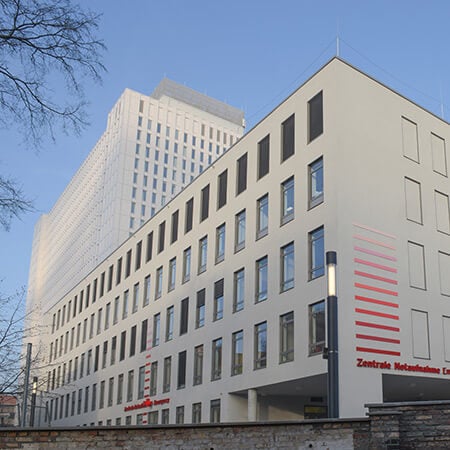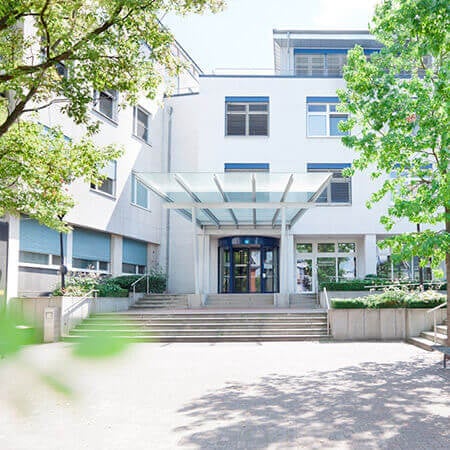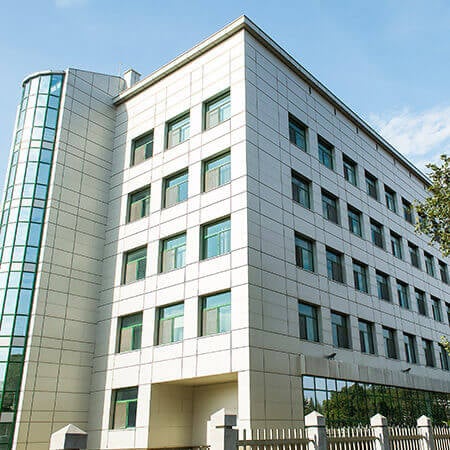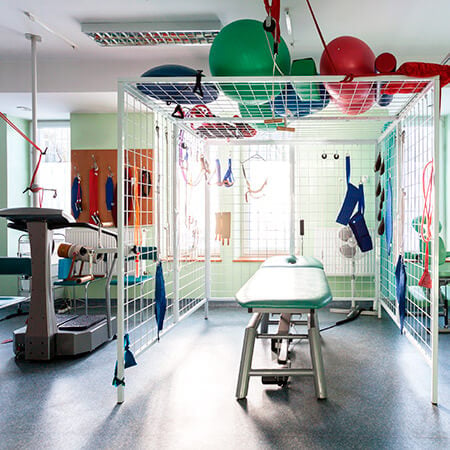Syringomyelia
Due to the difficulties associated with the organization of treatment in Turkey, Switzerland, South Korea and India, we are not currently processing requests to these regions.
If you are interested in treatment in Germany, please leave a request and our specialists will contact you as soon as possible.
Syringomyelia is a medical term that indicates presence of a single or multiple cavities in the spinal cord. Slow, but steady progression is peculiar for this disease. The process of the disease can significantly reduce the quality of a patient’s life and sometimes lead to death. Syringomyelia is difficult to treat and most of the existing therapeutic techniques are aimed at easing the symptoms of the illness.
The Booking Health portal presents 71 German clinics specializing in Syringomyelia (Myelosyringosis or Spinal gliosis) treatment
Show all clinics
Syringomyelia – Diagnostics
An illness can be suspected on the basis of:
- Patient’s complaints of reduce strength in the hands, pain, paresthesia
- Type of the clinical course (gradual onset, slow progression)
- Data of the neurological examination
- Plain radiographic examination
Diagnostics is based on the methods of neuroimaging. A doctor prescribes the following procedures to confirm a diagnosis:
- Spondylography (radiologic examination of the vertebrae)
- Computed tomography
- MRI
- Myelography (examination of the cerebrospinal pathways, used when it is impossible to perform CT or MRI for technical reasons)
Best clinics for the syringomyelia diagnostics in Germany:
Syringomyelia – Treatment
The majority of patients receive conservative treatment only. The purpose of the treatment is to eliminate the symptoms of disease and prevent possible complications. Vascular drugs, cholinesterase inhibitors (like Proserin), anesthetics, and vitamins are prescribed.
Radiation or radionuclide therapy may be effective at the initial stage of the disease. They are used to slow down the progression of syringomyelia. The irradiation of the spinal cord or the implantation of radioactive elements (iodine and phosphorus) into the patient’s body are also used. Courses are performed at intervals from six months to several years.
Surgical methods can’t cure syringomyelia, but many patients can achieve stable clinical improvement. Symptoms decrease in most patients. Different surgical approaches are used, it depends on the level of damage, the clinical course of the disease and the technical capabilities of the medical institution.
Surgeries are performed to manage the following issues:
- Draining cavities in the spinal cord
- Restoring cerebrospinal fluid proper circulation
- Dismemberment of adhesions
- Decompression of the spinal cord
- Dissection of the spinal cord terminal thread
The disease is extremely difficult to treat. Therefore, it is better to treat syringomyelia in a state-of-the-art European and German hospitals. Here the latest techniques of syringomyelia treatment are available along with best healthcare and developed health tourism.
Best clinics for the syringomyelia treatment in Germany:

Charite University Hospital Berlin

Hospital Neuwerk Moenchengladbach

Vitos Orthopedic Clinic Kassel
Syringomyelia – Rehabilitation
Rehabilitation is the process of body restoration from injuries, surgeries or diseases. It can have a different orientation such as: oncological, orthopedic, neurological, etc. There is also general therapeutic rehabilitation. It is indicated for patients after conservative and surgical treatment of the internal organs diseases.
The directions of the rehabilitation
There are several main directions of the rehabilitation such as:
- Medical one, which includes the restoration of patient's health, normalization of body functions, stimulation of compensatory possibilities, elimination of the chronic pain, etc.
- Physical one, which is responsible for improving of work capacity and tolerance for physical activities. In the complex cases, the purpose of this therapeutic rehabilitation area may be the restoration of the self-service ability.
- Psychological one, which helps to eliminate the mental disorders which may occur as a result of a disease (phobias, depression, apathy), to increase the human motivation, and to adapt to the changed living conditions.
The World Health Organization underlines 3 phases of rehabilitation such as: hospital phase, a phase of recovery and supporting phase. Different tasks are solved in different phases. The hospital phase is conducted immediately after the treatment. After the first phase begins the second one which usually takes place in sanatoriums or rehabilitation centers. This is the boundary between two periods, namely illness and future life. Then a supporting phase is required. The patient maintains the achieved level of his health and physical activity at home or visits the rehabilitation center from time to time.
Rehabilitation methods
The most modern rehabilitation programs are used in Germany. They are adapted individually for each patient, and are based on the recent disease, age, physical possibilities, and the results of treatment. Different specialists such as: therapists, psychologists, rehabilitators, kinesiotherapists, physiotherapists are involved in the rehabilitation process.
The following methods of rehabilitation are used:
- Dosed physical activity
- Training on the simulators and in the pool
- Physiotherapy
- Acupuncture
- Manual therapy
- Microcurrent therapy
- Compression therapy
- Lymphatic drainage
- Natural factors of the nature (mud, thermal waters, etc.)
Any rehabilitation may include medicamentous support. It is necessary to hold a consultation with the patient about the proper nutrition and the way of life which is important for him in the current situation.
Rehabilitation programs in Germany are designed for 2 weeks. If necessary, they can last much longer. In this country, the patient is provided with qualitative care, accommodation in comfortable rooms and individually selected meals.
Rehabilitation programs in Germany show one of the best results in the world. Most patients successfully restore their employability and excellent health there. They remain physically active, return to the full social and family life.
Best clinics for neurological rehabilitation in Germany:
Author:
The article was edited by medical expert, board certified Dr. Nadezhda Ivanisova. For the treatment of the conditions referred to in the article you must consult a doctor; the information in the article is not intended for self-medication!
Sources:
NORD - National Organization for Rare Disorders
The cost of services includes
Here you can find the cost of treatment for this disease at the German University Hospitals. Leave a request and we will provide a free consultation with a doctor and will start organizing the whole treatment process.
The program includes the following:
- Issuing of an invitation for getting a visa for treatment as quick as possible
- Fixing an appointment at a time convenient for you
- Preliminary organization of a comprehensive examination and discussion of the forthcoming treatment plan
- Arranging transfer from the airport to the hospital and back to the airport
- Provision of interpreting services and services of a personal medical coordinator
- If necessary, assistance in the organization of further surgical treatment
- Provision of a medical insurance against treatment complications covering up to 200,000 euro
- Preparation and translation of medical records and recommendations from the hospital
- Assistance in the subsequent communication with your attending physician, including consultations on repeated X-ray images through the unique medical document management system E-doc


